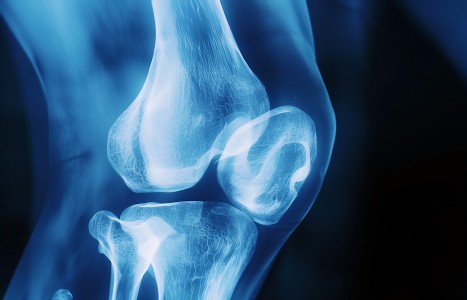This article focuses on nine severe injuries that are generally not diagnosable until the third to fourth week following the date of injury, including how to diagnose these severe injuries. The discovery of any of these injuries early can make a significant difference in the case outcome.
| Digital ExclusiveUnity in New Jersey
| This is the first article for a new column in DC called, "Taking Chiropractic to the Next Level." This column serves to recognize the work of doctors of chiropractic who are making a difference within the profession, and to give you a chance to better see and understand where their efforts are taking us. |
The chiropractic situation in New Jersey was similar to most other states, but even more so. Seven chiropractic state associations - the Central New Jersey Chiropractic Society, the Council of New Jersey Chiropractors, the Garden State Chiropractic Society, the New Jersey Chiropractic Society, the Northern New Jersey Chiropractic Society, the Ocean-Monmouth Chiropractic Society, and the Southern New Jersey Chiropractic Society - were competing for less than 3,000 licensed doctors of chiropractic.
Almost every time one of the associations tried to accomplish something for its members, at least one other association was ready to block its efforts. The chiropractic profession in New Jersey was routinely embarrassed in front of state politicians, in legal arenas and with the public.
Unity was the obvious solution. The tasks required to achieve that solution were daunting.
Dr. Michael Spadafino, former president of the New Jersey Chiropractic Society, recalls:
"The past history that we all experienced was a major barrier to unifying the profession in New Jersey. Our organization's board of directors had to accept our complete dissolution in the formation of the new organization. In order for us to overcome this concern, we needed to discuss some of the past problems and address what was fact and what was fiction. Once we were able to overcome the past concerns, we were able to begin open dialogue on topics that for years were not approached. Additionally, once we established a format for unity talks, we were able to stay on track and accomplish many tasks."
According to Dr. Allan Vargas, representative for the Council of New Jersey Chiropractors:
"The barriers facing the NJ chiropractic unity effort were to develop a workable organizational model that would allow differing chiropractic factions to openly express and support widely disparate chiropractic viewpoints within the constraints of a single board of directors. The primary breakthrough in the unity process was the recognition and acknowledgement of all organizations that 'unity' was not synonymous with 'merger.'"
Six of the seven chiropractic state associations agreed to meet in an effort to unify. (While the door is still open to them, the Garden State Chiropractic Society chose not to be involved in the meetings). Ultimately, the Central New Jersey Chiropractic Society, New Jersey Chiropractic Society, Ocean Mammoth Chiropractic Society, and Southern New Jersey Society agreed to merge into the Association of New Jersey Chiropractors (ANJC). The Council of New Jersey Chiropractors and Northern New Jersey Chiropractic Society agreed to function as part of the new association while remaining independent. The objective of the new association was that each of the six organizations, whether merged or independent, would be equally represented.
Dr. Spadafino explains:
"Although four organizations organized into one, we were pleased that the remaining two groups agreed to unify with us, even though they have maintained for two years their organization name. In essence, we have six groups together for 24 months - and at the end of the 24 months, two of the groups will consider relinquishing their organization name and assume the ANJC name. But for now, the six groups have worked as one association, and it continues to work effectively and efficiently one year later."
Making unity a reality took a willingness to be inclusive - and some creativity. According to Dr. Vargas:
"A key factor that made unity possible in NJ was a unanimous agreement to invite all NJ organizations to join the ANJC as equally represented "regions," regardless of whether the organization had merged or remained independent. The ANJC is comprised of three regions that are part of a merged organization, and two regions that are autonomous. A crucial aspect of the organizational structure was that it permits all members to run and vote for all positions in their local region, as well as ANJC president and vice president. This required that all members had to respect the viewpoints of all others, and meant that philosophical and practice tolerance became another major key to the unification process."
In order to make unity a reality, each organization had to make sacrifices. All of the organizations gave up their ability to independently pursue legislative and regulatory goals, their ability to independently generate income for political purposes, and their ability to independently set their own political agenda. Those organizations that merged gave up corporate names, bank accounts, officers, board members, lobbyists, staff, and more. Individually, the leaders making the decision to merge their organization had to be willing to step down from their positions.
Dr. Spadafino notes:
"We do not feel we gave up anything. We believe we received so much more by accomplishing the unity of the profession. This was the goal of all groups at the unity table - to unify the profession and speak as one voice before the legislature and insurance industry in New Jersey. I believe we have demonstrated this important aspect in the past year, as we now have one lobbyist, one legal firm, and one position for the profession."
Dr. Vargas agrees:
"All organizations gained the benefits and cost savings that come with a single board of directors, treasury, headquarters, executive director, membership application, political agenda, and most importantly, a single voice to represent our patients."
Both doctors are quick to recommend that other states follow New Jersey's example. This is what they recommend:
Dr. Spadafino: "Do not wait to unify before it is too late to do so! We have seen so many positive outcomes as a result of unity; unity does not need to be a complete merger - you can establish unity via an autonomous working relationship that allows each group to have participation in the entire process. Build in the opportunity for evolution as trust and successes occur.
"The process was not easy; we met weekly and conversed daily via phone and e-mail. There were times I felt that unity would not take shape because personalities were too embroiled with past experiences. We worked through the emotion and centered our discussions on the future of the profession. We learned early on that unity is not about you - it is about the profession - and once we centered on this aspect, we maintained positive discussions and worked toward a wonderful resolve for the six different organizations at the table. There are many forces out there working against us. We really only have each other, so let's lift each other and not push each other down."
Dr. Vargas: "The best advice we can give to other state associations is to first retain the services of the best professional mediator available. Our second piece of advice is to recognize that unity can take many forms, and total merger may not only be unworkable, but may also be undesirable in many instances.
"The ANJC stands ready to assist any state that is desirous of unity. Feel free to contact ANJC headquarters at (732) 264-4200 if we can ever be of any assistance. Please visit our Web site at www.anjc.info."


